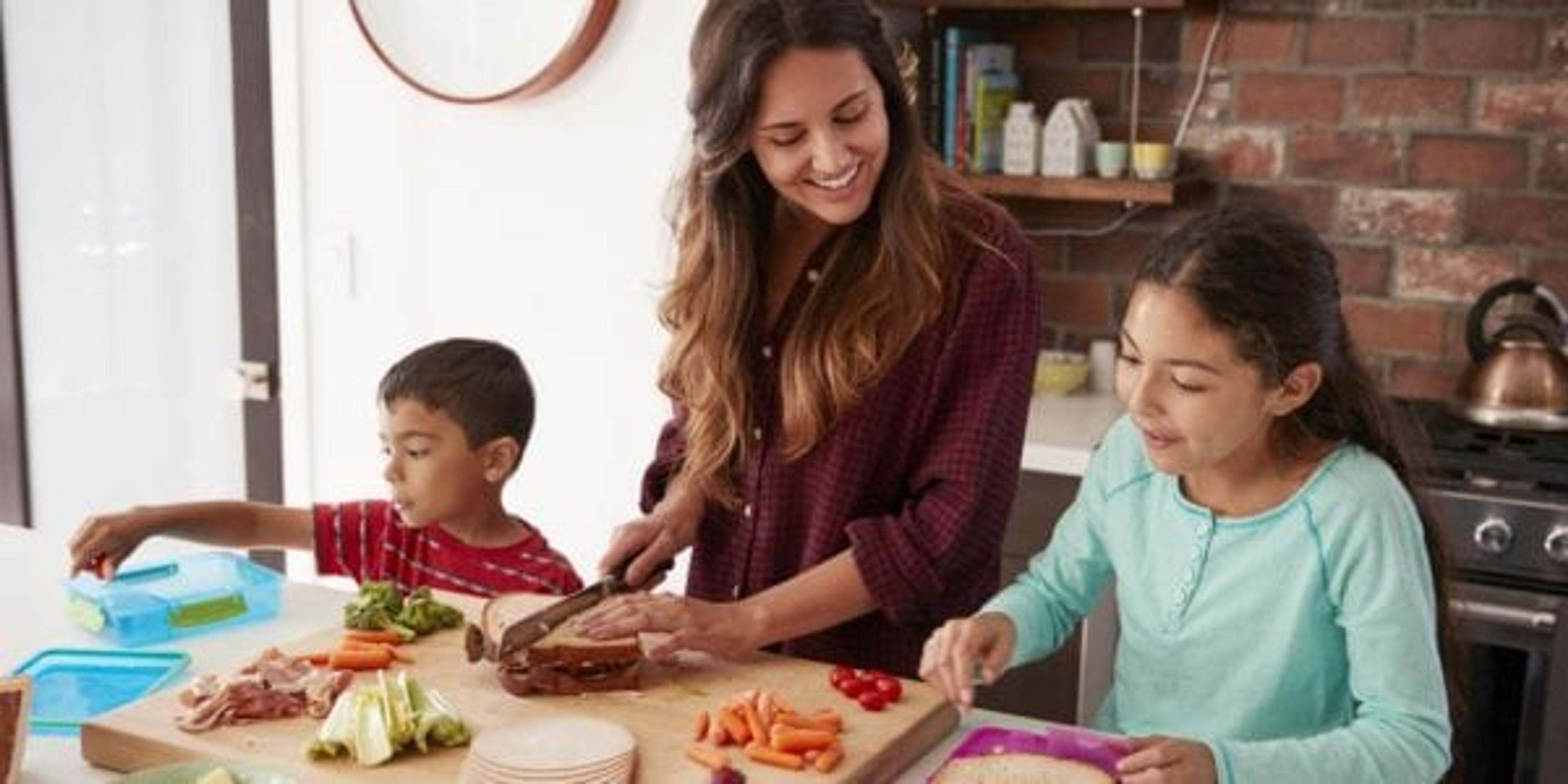Seven Back-to-School Kitchen Hacks
| 3 min read

Between doctor visits and busy schedules, it can be tricky to meal plan during the back-to-school season. August, also known as Kids Eat Right Month, encourages parents to offer healthier choices at home and in lunch boxes. Believe it or not, Michigan has the 12th highest obesity rate for youth ages 10 to 17.
In an effort to combat this, consider some of these kitchen hacks to incorporate good nutrition into the family’s diet and start the school year on a healthy note:
- Start with a Clean Slate: Research shows that organizing can relieve stress, improve productivity and even help us make healthier choices. To initiate kitchen cleaning as a family, assign everyone one age-appropriate task over the course of a few days. Start with shelves and drawers, removing old or expired items and decluttering the space for new inventory. Young kids can help match Tupperware or even organize cupboard items by color, size or food group.
- Be Prepared: Take note of all basic ingredients and tools in the kitchen and make a list of any other must-have items for the school year. Invest in clear storage containers, reusable sandwich bags, a muffin tin and any other kid-friendly tools for everyone to contribute to lunch-making throughout busy weeks.
- Get Inspired: Preparing meals at home allows the exploration of a wide variety of recipes, flavors and unique foods. Meal plan and name the days of the week to help inspire a delicious, diverse menu. For example: Mediterranean Mondays, Taco Tuesdays, Wellness Wednesdays, Kids Cook Thursdays, Leftover Fridays and more. Those having a hard time with kids should know there are creative ways to sneak them into meals. Remember, it can take approximately 10-20 tries to acquire a taste for different foods.
- Be Specific: Create a detailed menu with breakfast, lunch and dinner in mind. Rather than writing “taco day,” get specific about each food item. For example: seasoning, sauce, vegetables, etc. This minimizes prep time and reduces the chance of cooking errors. Also, the grocery list should be easily accessible, such as a whiteboard on the fridge or a phone app, allowing for regular additions or updates.
- Create a System: Make the pantry and fridge easier to navigate by grouping like items. Dedicate shelves/sections to a certain food type (i.e. putting all canned vegetables together). Or separate by events, such as school lunch, afterschool snacks or weekend treats. To make preparing lunches easier, try having different storage bins or areas in the pantry or refrigerator, where your kids can grab items to be a part of the lunch-packing process. You can label them as fruit, veggie, snack, nuts, treats and more.
- Plan Ahead: Each Sunday, wash and cut up fruits and veggies to store in single-serving containers. Choose reusable dishes for protein sources like meat and almonds. Be sure to include convenient snack options like yogurt, trail mix, crackers and hummus. Some fun, easy and kid-friendly recipes include: Apple, Turkey, and Cheese Pockets, Italian Lunch Skewers, Rainbow Veggie Pizza and Tropical Island Yogurt Parfait.
- Get the Kids Involved: Cooking is a great way to boost self-esteem and promote healthy eating habits. Encourage children to participate in school lunch meal prep and cleanup. Have them contribute ideas for the grocery list and create meals that are simple and delicious. When children are exposed to healthier eating habits at a young age, they are more likely to invest in their health as adults. Often, the tradition carries on into future generations.
If you found this post helpful, you might also enjoy:
About the author: Grace Derocha, registered dietitian, certified diabetes educator and certified health coach at Blue Cross Blue Shield of Michigan
Photo credit: monkeybusinessimages





